Related Research Articles

The Hannover CL.III was a German military aircraft of World War I. It was a two-seat multi-role aircraft, primarily used as a ground attack machine. Like the other Hannover "light-C-class", or "CL" designated aircraft designed by Hermann Dorner, it included an unusual biplane tail, allowing for a greater firing arc for the tail gunner. Until the introduction of the aircraft, such tails had only been used on larger aircraft.
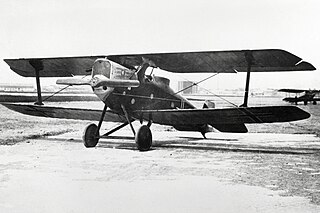
The Hannover CL.V was a biplane ground-attack aircraft built in Germany during World War I, which saw some service and additional production in Norway following the war.

The Hannover C.IV was a prototype escort fighter built in Germany during World War I, which formed the basis for a passenger aircraft following the war. Derived from the Hannover CL.II, the C.IV shared the same basic conventional biplane configuration with the unusual biplane tail of that aircraft, but incorporated the overhanging, aerodynamically-balanced ailerons developed for the Hannover CL.III. Intended for high-altitude operations, the aircraft was equipped with a far more powerful engine than its predecessors. Another important difference was the unusual interplane strut arrangement of this aircraft. The wings were braced with two struts that converged from two attachment points on the upper wing to a single attachment point on the lower, creating a V shape when viewed from the front or rear of the aircraft. Novel at the time, this foreshadowed the Warren truss strutting arrangements that already existed on the contemporary Ansaldo SVA Italian single-engined reconnaissance aircraft designs in full form, and would be seen in the 1920s and 1930s with later Italian combat aircraft.
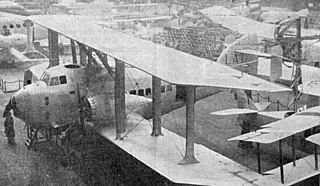
The Latécoère 4 was a three-engined, 15-passenger biplane built in France in the early 1920s. It proved difficult to fly and was discontinued, though a second machine was completed as the Latécoère 5 bomber.
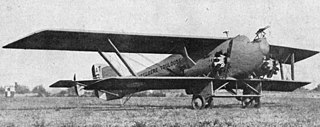
The Latécoère 6 was a French four-engined biplane bomber of the early 1920s. It was of advanced all-metal construction and probably the first aircraft to use geodetic construction. Only one was built.
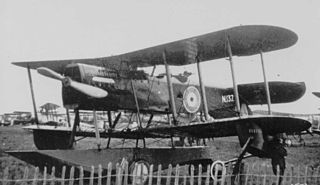
The Parnall Puffin was an experimental amphibious fighter-reconnaissance biplane produced in the United Kingdom just after World War I. It had several unusual features, principally a single central float and an inverted vertical stabilizer and rudder, and showed promise, but at that time no new aircraft were being ordered in numbers for the RAF and only the three Puffins of the initial order were built.
The Parnall Pike was a 2/3-seat biplane reconnaissance aircraft, capable of operating off carrier decks or from water, built to an Air Ministry specification in 1927. Only one was constructed.
The Farman F.30A C2 was a two-seat biplane designed as a fighter in France in 1916 and powered by a single, water-cooled radial engine. It showed poor flight characteristics and only one was built, though it was modified twice. It should not be confused with the similarly named Henry Farman HF.30 of 1915, a completely different aircraft which was used in large numbers by the Imperial Russian Air Service.
The Hanriot HD.6 was a French two-seat fighter aircraft prototype, built towards the end of World War I though not flown until after the armistice with Germany. A biplane with an unusually narrow gap between upper and lower wings, powered by a single water-cooled radial engine, it did not enter production.

The NVI F.K.35 or Koolhoven F.K.35 was a two-seat fighter aircraft built in the Netherlands during 1926. It was completed and exhibited but, through a combination of ground accident and financial problems, never flown.

The Wibault 2, Wib 2 or Wib 2 BN.2 was a single engine biplane aircraft designed and built in France in the early 1920s. It was intended as a heavy night bomber, though a thirteen-seat passenger version was proposed. Only one was built.
The Letov Š-13 was a single-seat, single-engine fighter aircraft designed and built in Czechoslovakia in the early 1920s. A biplane, it had aerodynamically thick wings which were originally cantilever structures, though interplane struts were later added. Only one was produced.

The LFG Roland G.I was a large prototype single-engine biplane bomber built in Germany in 1915, during World War I. It had a single engine buried in the fuselage driving pusher configuration propellers mounted on outriggers.

The Albatros C.XIV was a German two seat, single engine, biplane fighter aircraft built in 1918. Only one was constructed.
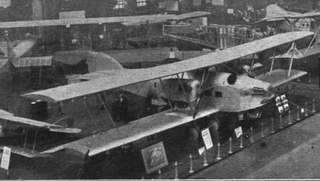
The Potez XVIII was a French airliner from the early 1920s, a three-engine biplane carrying up to twelve passengers.
The Caudron C.91 was a French single engine biplane with an enclosed passenger cabin seating four. It first flew in 1923.
The Astra-Protopopescu was a Romanian reconnaissance aircraft flown and tested in 1925.
The Latham Trimotor was a large French trimotor biplane built just after World War I and used in small numbers by the French Navy.
The Caproni Ca.66 was an Italian night bomber designed to reequip the post-World War I Italian Air Force. Only two examples of the four-engined biplane were built.

The Zeppelin-Lindau Gs.I, often known post-WWI as the Dornier Gs.I after its designer Claude Dornier, was a civil flying boat developed immediate post-war from a military prototype. Its passenger cabin seated six. Only one was completed, and that was eventually scuttled to keep it out of Allied hands. Another of the military prototypes was intended to have a bigger, nine seat cabin and other refinements but the Gs.II was incomplete when discovered by Allied inspectors.
References
- Taylor, Michael J. H. (1989). Jane's Encyclopedia of Aviation. London: Studio Editions. p. 469.